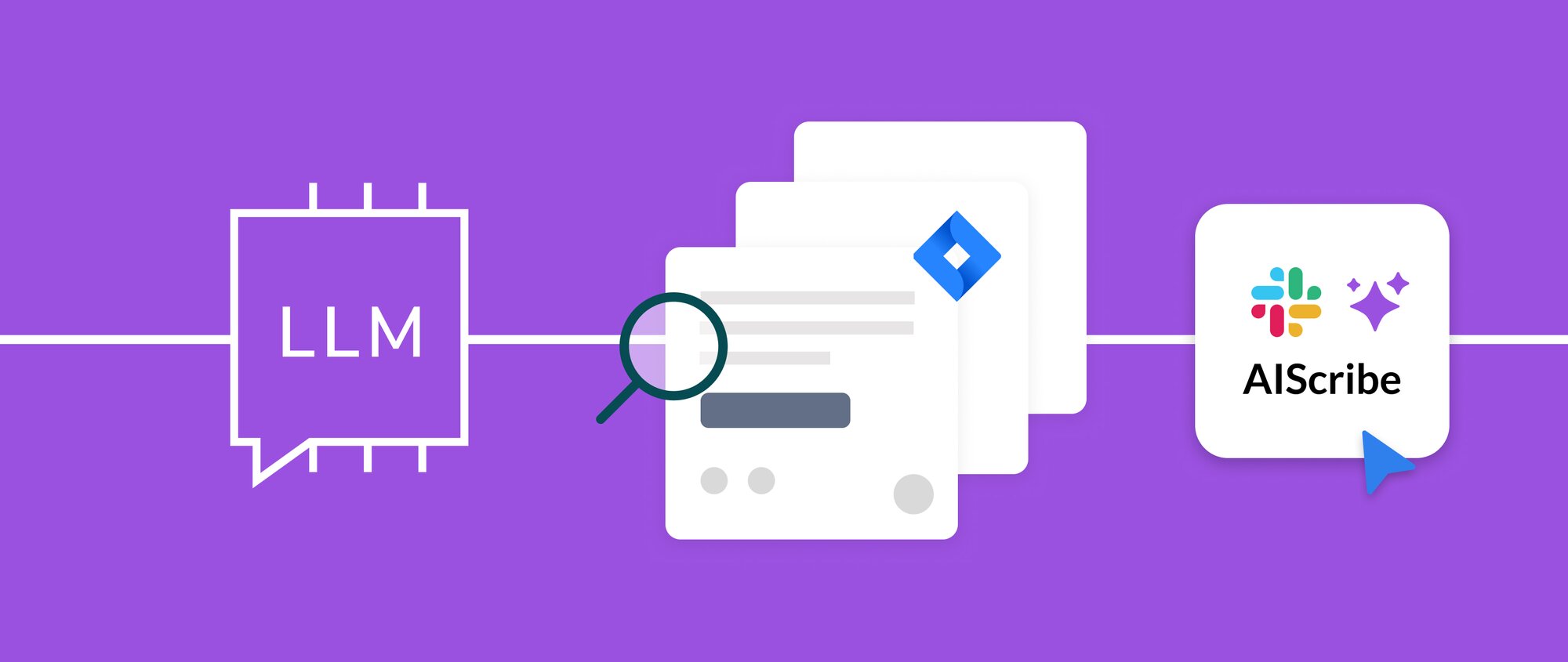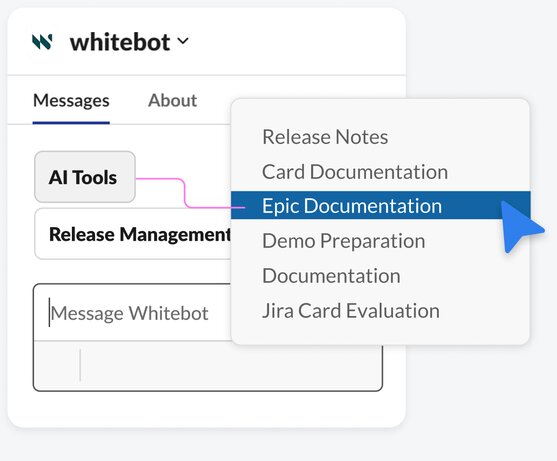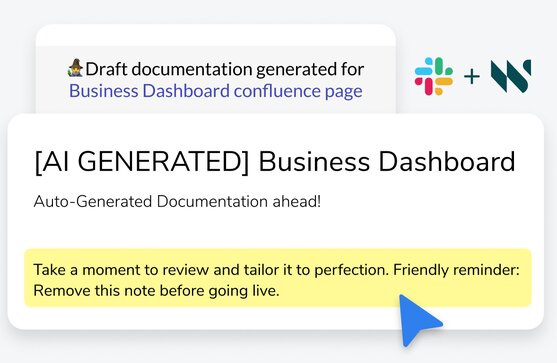Our dedicated “Labs” team at Whitespectre created an AI tool that automatically generates documentation from JIRA cards, resulting in a 75% reduction in time to generate high-quality documentation. This change has significantly enhanced productivity in this area, leading to efficiency gains for our teams and client partners.
SERVICES
Technical Architecture
UI/UX Design
Development
Product Strategy
TECHNOLOGY
OpenRouter
Ruby on Rails
Anthropic
CLIENT


The Challenge
Many companies struggle with creating and maintaining high-quality documentation for their software products - whether that’s comprehensive details on the latest features and functionality, how to use internal tools, or what changed and when. Yet, having that documentation can make a huge difference to an organization's efficiency, improving everything from faster onboarding and team alignment to smoother releases, better customer service, and efficient knowledge transfer.
The irony is that many delivery teams already have all the ‘building blocks’ of the content within the many user stories and requirements they create when building software. However, it’s time consuming to turn those elements into structured and easy-to-read documentation.
Recognizing this, the Whitespectre Labs team saw an opportunity for AI to bridge the gap. Our challenge: could we use Large Language Models (LLMs) to automatically turn the user stories and requirements in JIRA cards into high-quality documentation, saving hours of work for our teams and client partners?


The Process: Validating the concept & optimizing AI outputs
As with all Whitespectre Labs initiatives, we took a fast-moving, iterative approach. Our first step was developing a proof of concept to validate if AI models could reliably convert our JIRA cards into structured, easy to digest, and accurate documentation.
This involved multiple rounds of prompt engineering to generate strong results, plus testing to ensure that the models could handle a wide enough range of card quality and still produce quality documentation. This ‘range testing’ inspired the team to create another tool in parallel, the ‘AI card evaluator’, which gives a user detailed feedback on the clarity and completeness of their JIRA card.
Once the concept was successfully validated, with documentation outputs that were far better than even we expected, we did a full JIRA integration and set up OpenRouter to allow us to test different LLMs and identify which one was best suited for our use case. This led us to select Anthropic for its human-like outputs and no hallucinations.


Bringing it together: A powerful tool, seamlessly integrated into existing workflows
With any solution meant to improve team efficiency, it's critical that it aligns with the company’s workflows and tools. In this case, we had the perfect integration vehicle: “WhiteBot”, our well-loved, proprietary SlackBot which we use daily to automate various tasks across the delivery teams.
Now, with a simple Slack command, team members could use WhiteBot to send a group of JIRA cards to the newly dubbed ‘AIScribe’. The tool then turns the cards into documentation and publishes it to Confluence, JIRA's knowledge base. In a matter of minutes, the bot replies with a link to the documentation, letting the user know it’s time for their final review.
In developing AIScribe, we focused on making sure the UX made it explicit when content was auto-generated and still in need of a user review. Our goal was to ensure the tool didn’t encourage people to go on auto-pilot, a significant risk with AI solutions, and instead gave us enhanced efficiency without sacrificing quality. We proved this out during a month-long beta phase where we used the team’s feedback to further optimize the tool. This process fine-tuned both performance and integration, making AIScribe an essential part of our toolkit.
The Impact: Hundreds of hours saved, for us and our clients
AIScribe dramatically improved documentation efficiency at Whitespectre, on average cutting down the time for these tasks from 2 hours to a 10 minute 'review and edit' job. To date, the tool has saved the Whitespectre delivery teams, and by extension our clients, hundreds of hours on the time to produce high-quality, valuable documentation.
With the rapid rise of third-party tools that make it easy for organizations to query knowledge bases, we believe that the value of ‘AIScribe’ will only continue to grow. Today, the Labs team is working on optimizing results when we input documentation produced with AIScribe into the next generation of AI assistants.
Highlights ✦
- Transforms common documentation tasks from hours into a swift 10 minute review, significantly enhancing team productivity and knowledge sharing.
- Integrates seamlessly with Slack, JIRA, and Confluence so accessing the tool is fast, easy, and aligns with the existing workflows.
- Excels at simplifying complex business rules and technical concepts into easy to digest documentation for stakeholders.
- Adept at incorporating the business value notes into documentation, ensuring outputs include the 'why' behind a feature, not just the how.
- Helps team members retroactively create documentation for past projects, ensuring no knowledge is lost and historical data is leveraged.